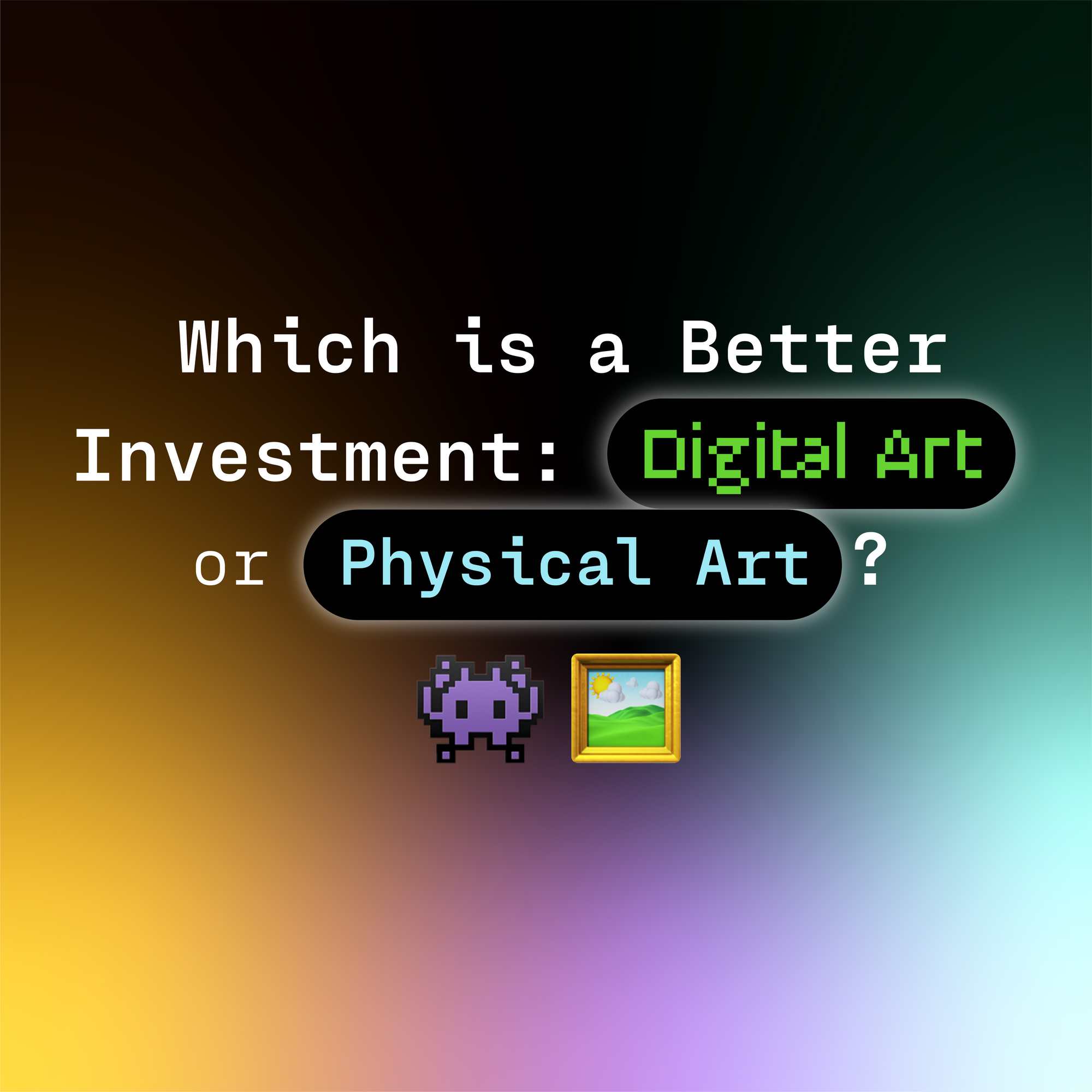Which is a Better Investment: Digital Art or Physical Art?
By Terrain.art | Dec 30 2021 · 8 min read
NFTs may have given digital works a shot in the arm. But physical works continue to be the most preferred form of investment for art collectors.
Many artists and art critics continue to view digital art as a sort of a poorer cousin of physical art. However, in recent times, especially with the rise of NFT artwork, digital art has acquired a fresh lease of life. After years of being equated with graphic designing, digital art seems to be acquiring primacy in recent times, although physical art continues to rule the roost.
Digital Artwork versus Physical Artwork: A Case Study
On March 9, a video was live streamed by a young artist, who goes by the name of his Twitter handle, BurntBanksy. The video showed a masked man burning a 2006 Banksy piece titled Morons (White). An NFT version of the physical piece was sold for USD 380,000. While burning the artwork, the masked man said the following prophetic words:
“If we were to have the NFT and the physical piece, the value would be primarily in the physical piece. By removing the physical piece from existence, and only having the NFT, we can ensure that the NFT, due to the smart contract ability of the blockchain, will ensure that nobody can alter the piece and it is the true piece that exists in the world, By doing this, the value of the physical piece will then be moved on to the NFT. [sic]”
The key takeaway from his own admission seems to be as follows:
- Given a choice between a digital piece and a physical piece, the physical piece will likely enjoy more value.
- The way a digital piece can enjoy more value is by forcefully obliterating (in this case, burning) the physical piece.
For those of you who are dillydallying between buying digital artwork and physical artwork, this video is then a timely reminder that digital artworks are yet to replace physical artworks as the most preferred form of investment.
What Gives Art its Value?
As it happens with any new form of art, what will happen over the course of the next few years is difficult to predict. The value of art is primarily determined by its originality, the fame of the artist and the quality of the artwork in question. The medium of the art is secondary. If an artwork exists in both physical and virtual forms, the value will primarily be of the original piece which is usually a physical work of art. The problem with digital representations of physical art is that digital versions can be endlessly produced and circulated. To gain value, the digital art piece will have to be attached to an NFT (non-fungible token) to certify its authenticity.
A lot of artists are getting around this problem by making art exclusively for the digital medium. The pandemic has further boosted sales of digital artworks since many galleries have been unable to hold in-person exhibitions for some time now.
NFT Boost to Digital Art
The coming of NFTs has undoubtedly inspired a new generation of digital artists to explore the medium more thoroughly. Perhaps the best-known example of the NFT success story is Beeple, American artist Mike Winkelmann, who made headlines this year by selling his NFT artwork Everydays for a whopping USD 69million. This has inspired a new generation of young artists to explore this medium and sell their artwork online directly to end-users. Bypassing the entire network of galleries, middlemen and contractors has helped these new creators make far more money than they would have through traditional channels.
Art as an Investment
From the point of view of investment, an NFT artwork is an asset class just like any other form of investment. Since any investment is not entirely risk-free, one needs to cautiously navigate the NFT market to ensure that they don’t get their hands burnt.
There have been instances of consumers paying higher gas fees for NFT transactions, wash trading (where multiple accounts operate in tandem to artificially pump up the price), and hackers copying NFT tokens and selling them as real ones. NFT artwork, just like traditional art, therefore, requires trained eyes to distinguish between useful and redundant ones. Finally, since NFTs work in a peer-to-peer economy, institutional oversight in the form of regulations, rules and grievance forums are sorely lacking. Governments across the world are mulling legislation to bring NFT transactions under the scanner.
Buying NFT Artwork Online: Things to Remember
So, if you are planning to buy art online and are having a hard time choosing between digital artwork and physical, here are a few key points to remember.
- The originality of an artwork is more important than the medium of art. An NFT, whether it is attached to a physical painting or a digital art piece, gives it the authenticity and scarcity it requires.
- If an artwork exists in both its physical and digital forms, always go for the physical art piece as it will command more value. Research the artist before you buy an artwork. There are several talented, young artists who sell original digital art pieces on NFT platforms. Opting for a well-known digital artist will give you the peace of mind you seek while buying art.
There’s no doubt that NFT sales have given a boost to digital art. However, it might still take a few more years for this medium to replace physical art. As per Statista, the volume of global art sales declined in 2020, although the total sales of online art nearly doubled during the same period. However, digital art online still makes about 30 per cent of the total art world. As of now, it seems that the predominance of physical artwork is here to stay.

